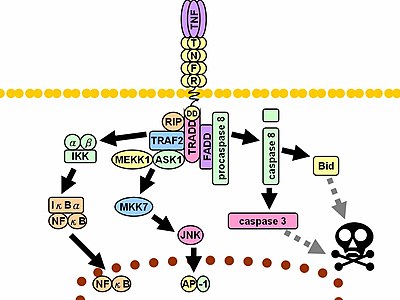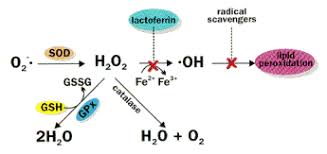INTRODUCTION

Crocus Sativus flowers are formed of 6 purple tepals, 3 yellow stamens and a white filiform style ending in a stigma composed of 3 threads.
This plant, which belongs to the Iridaceae family, is cultivated in many countries, such as Iran, India, Spain,Italy,Greece.
Saffron is the dried stigmas of the plant: it represents only 7,4% of the flower.
Saffron has been used as an important ingredient in various parts of the world since ancient times.
It is one of the highest priced and the most used spices in many countries for flavoring and coloring food.
Saffron spice annual world production is about 200 tons.
Between 158000 and 300000 flowers are needed to obtain 1 kg of saffron spice.
Spanish saffron, grown in Castilla-La Mancha-, is considered the best quality worldwide.
Flower harvest and postharvest steps to produce Saffron have been performed manually for many years.
Mechanisation of flower collection, stigma separation and dehydratation process is a revolution in spice production.
Nowadays whole flowers or other floral parts different to stigmas may be exploited.
SAFFRON COMPOUNDS
Among more than 150 volatile and nonvolatile compuonds of saffron, major biologically active compounds are Crocin, Picrocrocin, Crocetin, Carotene and Safranal.
Good quality saffron contains about 30% Crocin, 5-25% Picrocrocin and usually up to 2,5% volatile compounds including Saffranal.
Crocetin is a natural carotenoid dicarboxylic acid that forms brick red crystals with a melting point of 285°C.
Its chemical structure is the central core of Crocin.

Crocin is a dyester formed from the disaccharide Gentioliose and the dicarboxylic acid Crocetins.
It has a deep red color and it forms crystals with a melting point of 186°C.
It is an unusual water-soluble carotenoid: when dissolved in water, it forms an orange solution.
It is the chemical ingredient primarily responsible for the color of saffron:spice coloring strenght is a quik measure of its Crocin content.

Picrocrocin is a monoterpene glycoside precursor of saffranal.
It is a degradation product of the carotenoid zeaxanthin, responsible for the bitter taste of the spice.

Saffranal, the main component of the distilled essential oil, is a monotherpene aldehyde, responsible for its characteristic aroma.
It derives from Aglycone, by dehydratation.
Aglycone is liberated during the drying process of Picrocrocin, with the action of the enzime Glucosidase.

There are also some compuonds synthesized from extrats of Crocus Sativus, like Dimethylcrocetin.
Dimethylcrocetin is prepared by alkaline hydrolysis in methanol of Crocetin.
HYPOGLYCEMIC EFFECT
The glucose transport in skeletal muscle is regulated by 2 distinct pathways:
- PI 3 KINASE PATHWAY, which includes activation of Akt (for the glycogen synthesis) and the other enzimes/proteins necessary for the acute metabolic effects of isulin, with GLUT 4 translocation from an intracellular pool to plasma membrane.

- AMPK PATHWAY, where AMPK is a phylogenetically conserved intracellular energy sensor that plays a central role in regulation of glucose and lipid metabolism. Activation of AMPK leads to phosphorylation and regulation of targets involved in diverse pathways, including ACC (Acetyl-CoA Carboxylase).

Both distinct pathways also increase phosphorylation and activity of MAPK (mitogen-activated protein kinase) which are important in insulin-stimulated glucose uptake via GLUT4 translocation.
Diabetes Mellitus is a chronic metabolic disorder affecting about 6% of population worldwide. Chronic hyperglycemia is a main contributor of the associated disorders, which can exacerbate defective glucose disposal by interfering with insulin action in insulin-targets tissues such as skeletal muscle, liver and adipose tissue. Skeletal muscle is responsible for more than 75% of glucose disposal in response to insulin, in the post-prandial state.
The hypoglicemic effect of Saffron is attributable to its metabolic activity in skeletal muscle.
Saffron can enhance glucose uptake in a time and dose-dependent manner (with a maximal increase occurring at 2,5 microg/ml), showing only negligible cytotossicity when its concentration in cells is near to 200 microg/ml.
Saffron induces an increase of AMPK phosphorilation in Thr 172 or in Ser 79.
Insulin increases glucose uptake acting on PI3k-pathway and causing a robust phosphorylation of Akt.
Compounds C (an AMPK inhibitor) but not LY294002 (a PI3K inhibitor) inhibits Saffron-induced glucose uptake.
This demonstrates that Saffron doesn' t act on PI3K-pathway.
Howevere there is a crosstalk between AMPK and PI3K pathways: when Saffron and insulin are present simultaneously, both pathways are more greatly stimulated comparing with those of their individual treatments.
The co-treatment of Saffron and insulin increases the translocation of GLUT4 on the membrane, without changing GLUT4 content in the cytosol.
mTOR (mammalian target of rapamycin) and its downstream molecules (p70SGK, 4EBP1) are activated by phosphorylation from insulin. They exert the physiological feedback regulation on insulin signaling through increasing the phosphorylation of Ser residue on IRS1.
Activation of AMPK pathway by treatment with Saffron is associated with enhanced phosphorylation of MAPKs and decreased phosphorylation of mTOR, increasing insulin sensivity.
These findings support a therapeutic potential of Saffron in the treatment of diabetes and its complications.

Saffron (Crocus Sativus L.) increases glucose uptake and insulin sensivity in muscle cells via multipathway mechanisms, 2012
ANTIOXIDANT PROPERTIES
Reactive oxigen species (ROS), such as hydrogen peroxide (H2O2), superoxide anion radical (°O2-), peroxyl radical (LOO°, responsible for phospholipid liposomes peroxidation), hydroxyl radical (OH°, responsible for deoxyribose damage), are the most important sources of oxidative damage in human body.
They are producted during oxidant reactions and they can start chain reactions.
Antioxidant compounds terminate these chain reactions by removing free radical intermediates, being oxidized themselves.
Many natural and synthetic compounds have antioxidant power, including many tipically present in C. Sativus flowers.
Various mechanisms of action may be related with the antioxidant effect of Saffron extracts:
- Interaction with enzymes (SOD, Peroxidase) or with signal transduction of free radicals in the monocytes. This is possible because the presence of sugar moietes attached to the terminal -COOH groups of the Crocetin skeleton plays a role in the penetration of cell membranes. Free radicals are produced in hypoxic conditions after stimulation by the addition of insulin. Incubation of insulin-stimulated monocytes with Saffron extracts results in a marked reduction of free radicals production, almost counteracting the negative effect of insulin.
- Direct suppression of ROS, that varies depending upon the compounds. Crocetin free redical scavenging activity is superior to Dimethylcrocetin. The reasons for that are the structural features of the two carotenoids. The length of the conjugated double bonds is the same. The difference between the two carotenoids is the presence of the hydroxyl moiety of the carboxylic group in Crocetin and the presence of one methyl ester group on each of the termini of the unsaturated hydrocarbon chain in Dimethylcrocetin. Free radicals tend to react with H-donors: the presence of -OH in carboxylic group in Crocetin makes it more effective than Dimethylcrocetin. Furthermore the antioxidant activity in Crocetin increases as the concentration increases, in Dimethylcrocetin it reaches a certain point and then it starts to decrease. Safranal has lower antioxidant activity than Crocetin and Dimethylcrocetin.

Crocetin, Dimethylcrocetin, and Safranal Bind Human Serum Albumin: Stability and Antioxidative Properties, 2007
In C. Sativus flowers, tepals show the highest phenolic content.
Polymerization degree of phenolic compounds plays a crucial role in the antioxidant properties and it depends on pH. When pH is reduced to 1, the rupture of polymerization links increases the compounds number with lower polymerization degree.
Flavonoids are phenolic compounds detected in C. Sativus whole flowers, tepals, stamens, styles and bio-residues.
Tepals exhibit the highest flavonoid content in the form of Keampferol, Quercetin, Naringenim, flavanone and flavanol derivates glycosylated and esterified with phenyl propanoic acids.
Anthocyanins are flavonoid pigments detected in C. Sativus whole flowers, tepals and floral bio-residues, but not in stamens.
Although stamens have lower phenolic and flavonoid contents than whole flowers, flower bio-residues and tepals, they show the most effective antioxidant activity. This suggests that phenolic compounds contained in stamens could be more active at lower concentrations or that in stamens there are other antioxidant substances different to phenolic compounds.
Stamens exhibit the most potent LOO° and OH° radicals scavenging activity; Stigmas show LOO° and °ABTS- radicals scavenging activity; Tepals and Leaves show DPPH and NO scavenging activity and Cu++chelating activity; Saffron spice shows only LOO° and OH° radicals scavenging activity.
The synergistic effect of all the bioactive constituents of Saffron gives it a significant antioxidant activity.
Increasing the applications of Crocus Sativus flowers as natural antioxidants, 2012
Under pathologic conditions such as ISCHEMIA, the balance between oxidant and antioxidant system is jeopardized.
Oxidative stress, free radicals and pro-inflammatory factors productions (IL1-beta,NF-KB, IL-6, TNF-alfa), damaging cerebral endothelial cells and increasing blood-brain barrier permeability, constitute the main cause of edema formation.

Treatment with Crocin present in Saffron (60 mg/kg) has a triple effect:
- Reduction of brain ischemia volume, increasing Superoxide Dismutase (SOD) activity and Glutathione Peroxidase (GPx) activity and decreasing malondialdehyde (MDA) content. MDA is generated from ROS during polyunsatured lipids degradation: it is a bio-marker of oxidative stress.

- Protection against reperfusion damage, lowering blood pressure after brain ischemia, when autoregulation mechanisms of cerebral blood flow are impared, reducing also the reperfusion flow.
- Protection against brain edema formation, reducing lipopolysaccharide-stimulanted production of IL-1beta, IL-6,TNF-alfa, NF-KB and their signaling pathways.
This triple Crocin effect, added to its low toxicity even at high dosages, can be useful for treating stroke in humans.
Protective effect of Crocin against Cerebral Ischemia in a dose-dependent manner in a rat model of Ischemic Stroke, 2012
PROTECTION FROM AMD
AMD (Age-related Macular Degeneration)is a retinal neurodegenerative disease whose distintive features in early stage are large soft drusen and hyper-hypopigmentation of the retinal pigment epithelium, with a moderate loss of central vision.
In its late stage, the disease is characterized by the atrophy of the retinal pigment epithelium or the subretinal neovascular membranes, leading to a more severe central visual impairment.
AMD is the major cause of severe, irreversible low-vision in elderly people of developed world.
Many risk factors appear to be oxidative and proinflammatory, linked to decreased oxigen diffusivity through liquids and light-induced photoreceptors death.
Saffron daily supplementation of 20 mg/die prevent the developement of AMD because it contents:
- Crocetin, which increases oxygen diffusivity through liquids such as plasma.
- Crocin, which is able to activate metabolic pathways to protect cells from apoptosis and to reduce light-induced photoreceptors death, acting in a way similar to Beta-Carotene.
In presence of Beta-Carotene, light exposure induces a strong upregulation of fibroblastic growth factor (FGF2). In presence of Saffron this phenomenon isn't seen because Crocin acts as regulator of programmed cell death, so photoreceptors maintain both morphology and function.
Light damage causes the over-regulation of 175 entities (genes and ncRNAs): Saffron treatment before light exposure reduces the expression of 53 entities.
Symptoms of the beneficial effects of Saffron supplementation are the improvement in contrast and color perception, reading ability and vision at low luminances. All these effects lead to an improvement in the quality of vision and in the quality of life.
A longitudinal follow-up study of saffron supplementation in early age-related macular degeneration: sustained benefits to central retina function, 2012
CONCLUSION
Saffron properties mentioned are only the more recently discovered (all these studies have been conducted in 2012).
Other Saffron functions (antidepressant, anticarcinogenic, antiatherosclerotic, anthyperlipidemic) have been known for many years.
Research studies about Saffron are continuing: new properties can be discovered.